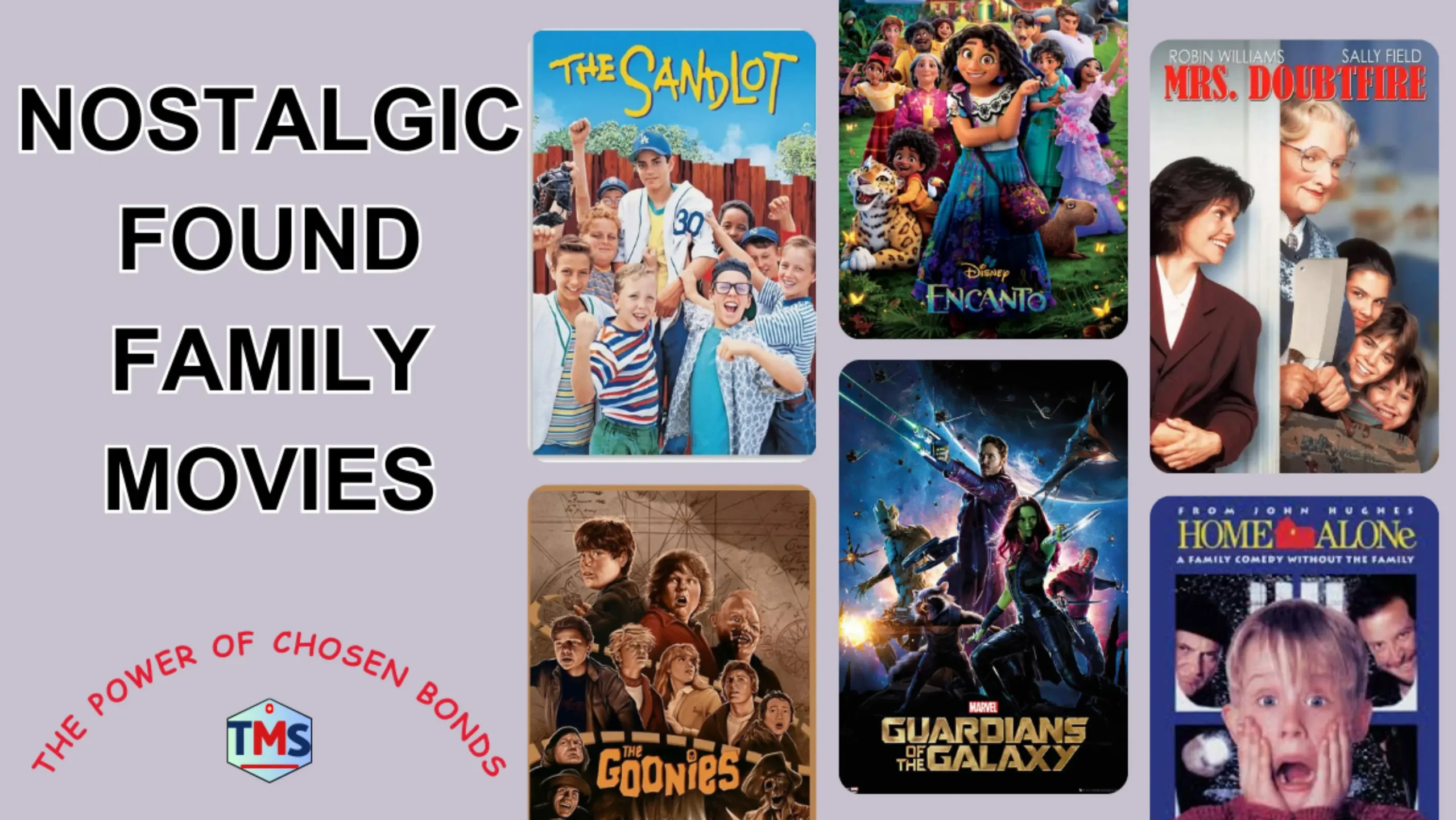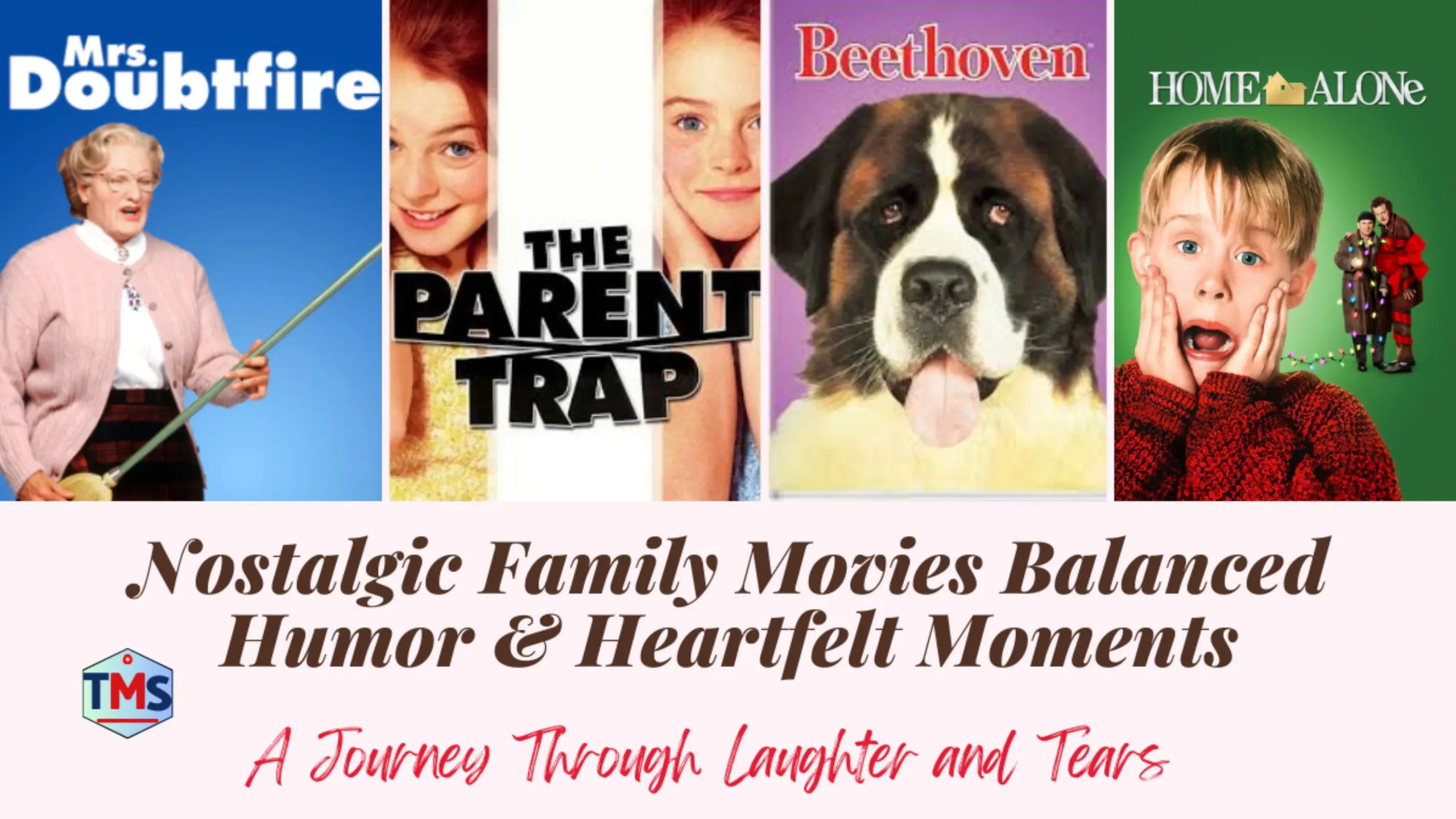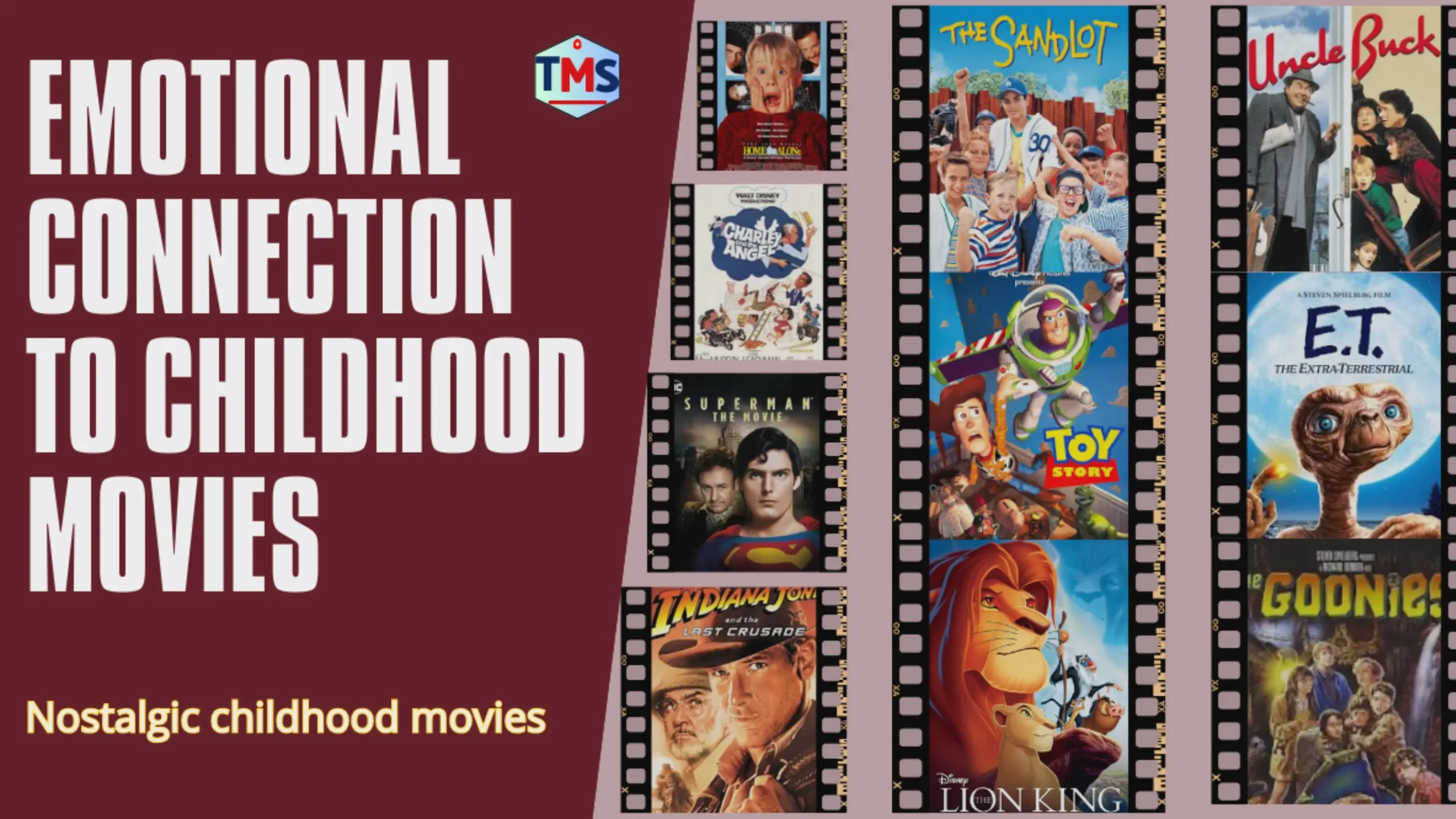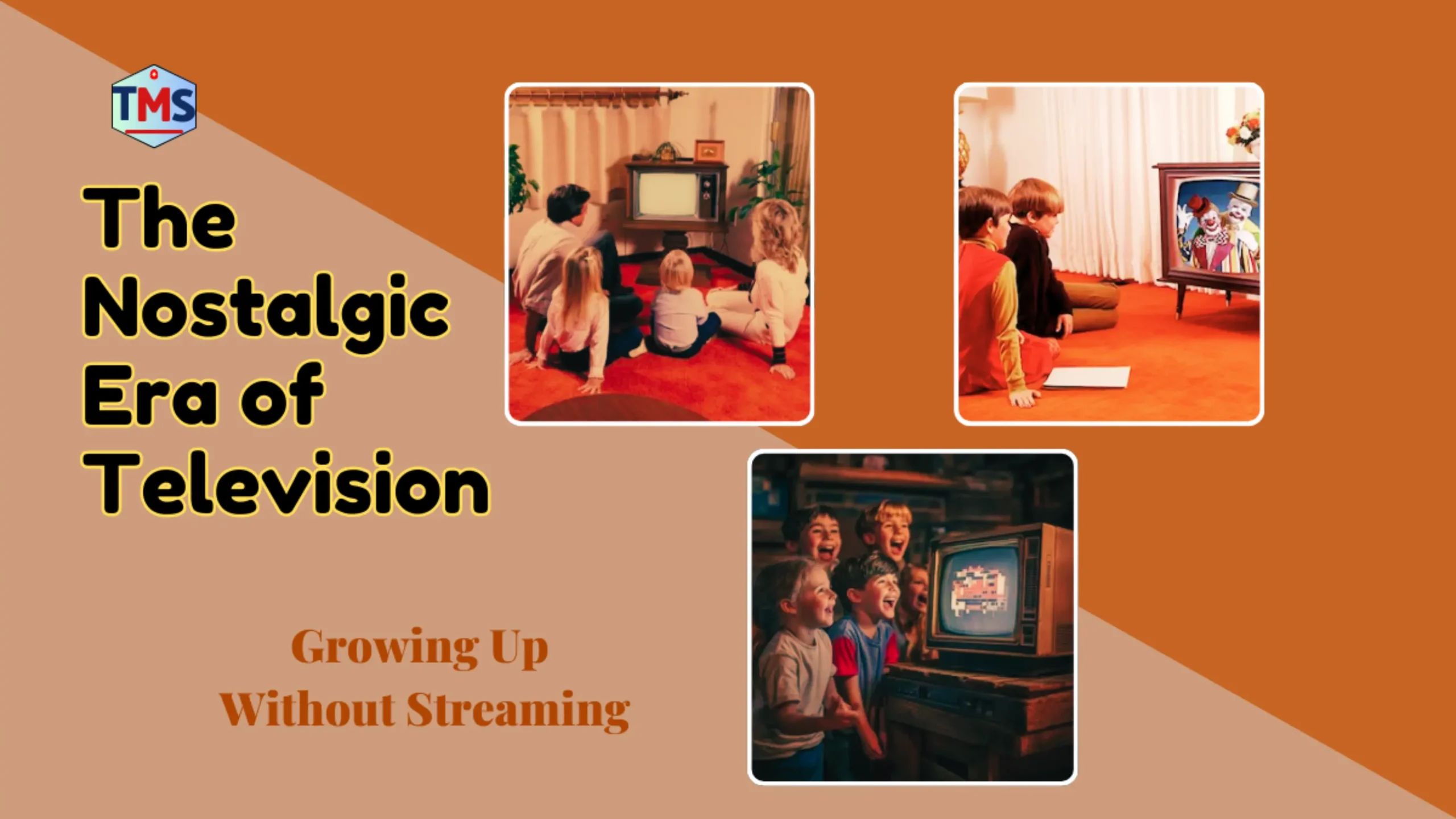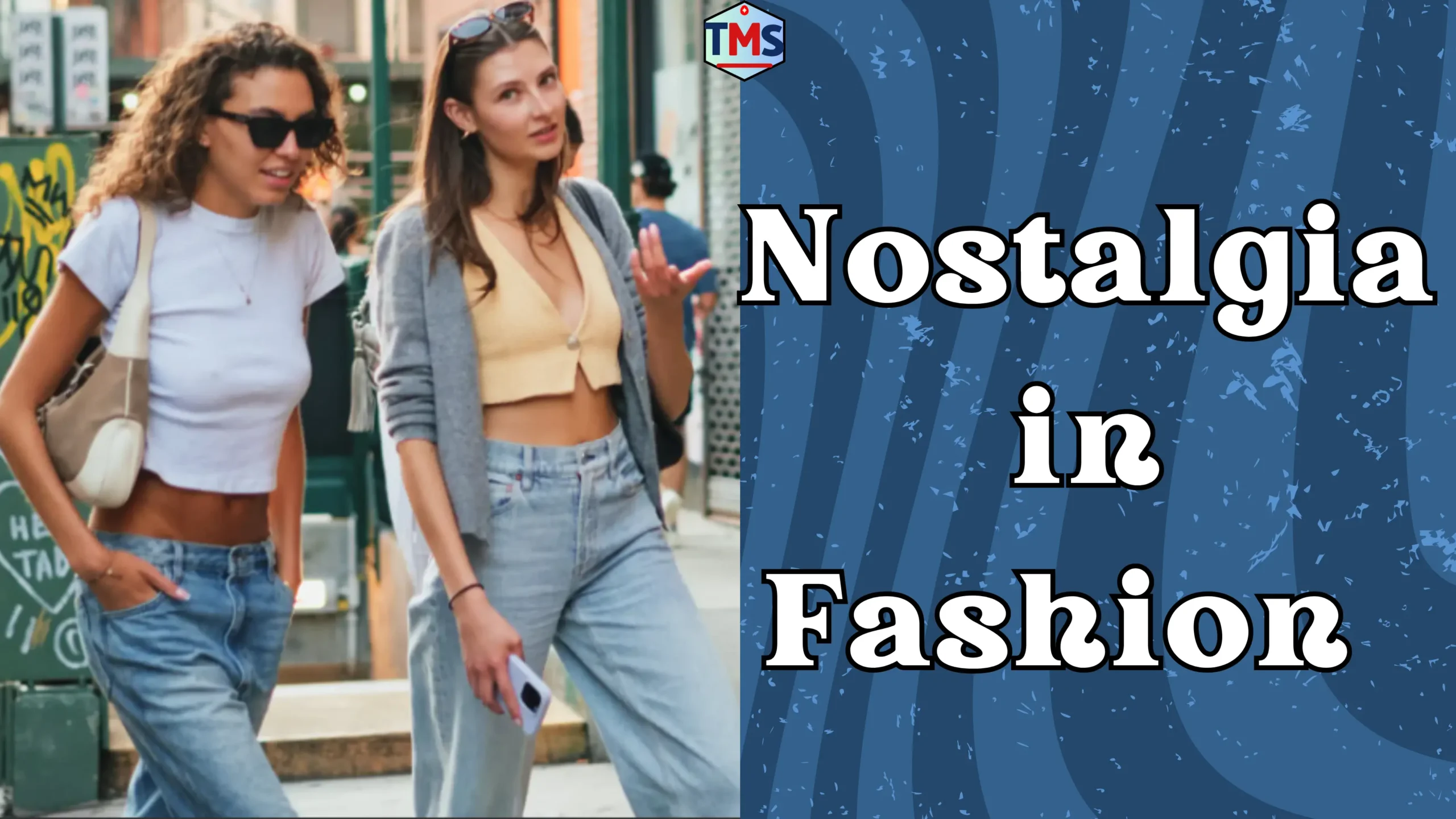Exploring the Heartwarming Power of Connection
There’s something magical about those childhood movies that still give us a warm and cozy feeling inside. Filled with adventure, heartwarming, and a touch of cuteness, those nostalgic movies didn’t just entertain us. They introduced a form of storytelling that has become a favorite today: the found family. These movies showed us that family isn’t just about blood relations; it’s about the bonds we build through shared struggles, laughter, and loyalty.
Let’s take a trip down memory lane and see how nostalgic movies shaped the found family narrative and why they still touch our hearts today.
How Nostalgic Movies Shaped Found Family Narratives
Defining the “Found Family” Narrative
Let’s understand what we mean by “found family.” In literary and film analysis, a found family (sometimes called a chosen family) describes a group of unrelated characters who form deep, familial bonds through shared experiences, mutual support, and emotional attachment. Unlike biological families thrust upon us by circumstance, these are people we actively choose to love and protect as our own family.
Cultural sociologist Dr. Rebecca Martinez of Stanford University describes this phenomenon as “alternative kinship”—relationships that serve the same psychological and emotional functions as traditional family structures, but are formed by choice rather than blood ties. These narratives typically involve:
- Characters from different backgrounds find connection
- Mutual support in the face of adversity
- The development of trust and vulnerability
- The formation of lasting bonds that replace or complement the biological family
The Birth of a Beautiful Trope
Films like The Goonies, Stand by Me, and E.T. introduced audiences to the idea that family isn’t just who you’re born into; it’s who sticks with you through the hard times. These films showed us that the strongest bonds are often formed between people who care about each other.
What made these films so special was their ability to take characters from very different backgrounds and tie them together through shared experiences. The shy kid, the rebel, the outcast, and the leader—each brought something unique to the group, teaching us that diversity doesn’t make families weaker, but stronger.
Creating Emotional Blueprints
These nostalgic films created emotional blueprints that stick with viewers long after the credits roll. Research shows that nostalgia increases “eelings of social connectedness and support”, which is found family narratives feel so deeply meaningful. When we watch Elliot take care of E.T. or watch the kids in The Breakfast Club break through their social barriers, we are witnessing the formation of bonds that go beyond traditional family structures.
The beauty of these films is their ability to show that there is no one right way to be a family. Whether it’s a group of kids searching for pirate treasure or teens spending Saturday detention together, these films confirmed that love, loyalty, and mutual support matter more than genetics or social expectations.
The Adventure Formula
Many of these popular films followed a similar pattern: bringing together a group of diverse characters, putting them through a challenging adventure, and watching their shared experiences forge unbreakable bonds. This “trial by fire” approach to building relationships became a framework that filmmakers still use today.
The adventure itself—whether it was a treasure hunt, facing down bullies, or helping an alien find a home—served as a catalyst for character growth and relationship development. By facing fears together and protecting each other, these characters showed what true family is like: people who are always there for each other no matter what.
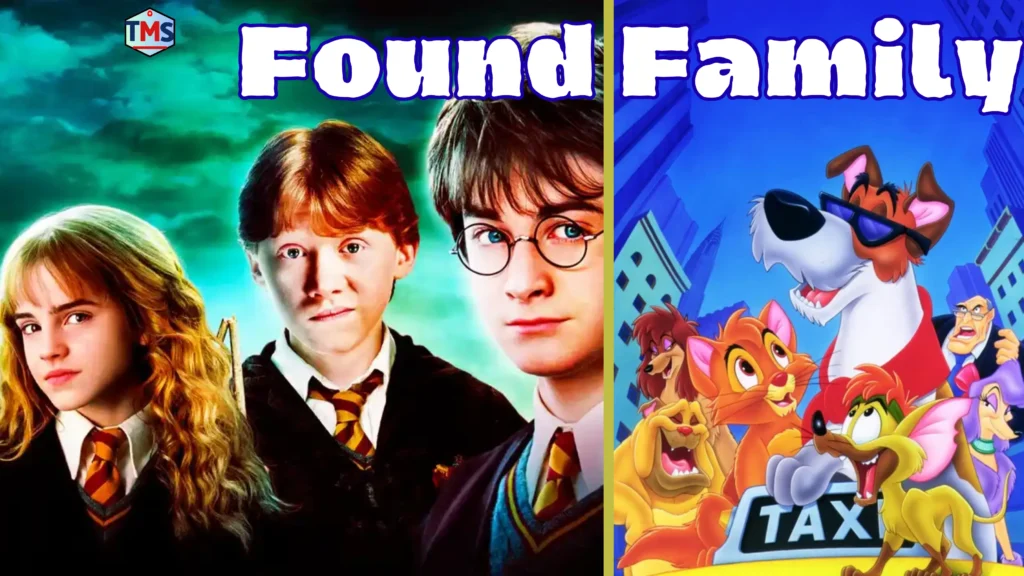
Beyond Blood Relations
What made these nostalgic family films different was their willingness to explore relationships that existed outside of traditional family structures. They showed us mentors who weren’t parents, siblings who weren’t relatives, and guardians who chose their role rather than inherited it. It was revolutionary for its time and helped normalize diverse family arrangements for generations of viewers.
These films also addressed complex topics like abandonment, acceptance and belonging in ways that felt authentic rather than preachy. They recognized that sometimes the people who should love us unconditionally don’t love us unconditionally, and that’s okay—because we can find that love elsewhere.
Conclusion: Why Found Family Narratives Endure
In our increasingly connected yet often lonely world, these nostalgic found family films offer something precious: hope. They remind us that belonging is possible, that love comes in many forms, and that the right people will accept us exactly as we are. They’ve shaped not just how we tell stories about family, but how we think about relationships, loyalty, and what it means to truly belong.
In an age of increasing social isolation, political division, and digital distancing, perhaps it’s no surprise that found family narratives continue to resonate. They remind us of a fundamental truth: family isn’t just something we’re born into—it’s something we can actively create.
The Golden Age: Iconic Found Family Films That Defined the Era
Let’s revisit some of the most memorable found family narratives in cinema history:
- E.T. the Extra-Terrestrial: Perhaps the ultimate “found family” tale, where a lonely boy and an alien form an unlikely kinship stronger than biological ties. Spielberg masterfully uses the alien as a catalyst to strengthen Elliott’s existing family while creating a new form of connection.
- The Goonies : A band of neighborhood kids from different backgrounds unite for adventure, forming unbreakable bonds in the process. The genius of this film lies in how it shows children actively choosing each other while navigating their existing family complications.
- Stand By Me: Four boys from broken or troubled homes find understanding and acceptance in each other that they can’t get at home. Their journey represents both physical and emotional discovery.
- Mrs. Doubtfire: While technically about a biological family, this film explores how family bonds can be maintained and even strengthened through unconventional arrangements.
- The Mighty Ducks: A reluctant coach and a team of misfit young hockey players gradually transform from adversaries into a supportive community, showing how shared goals can forge family-like bonds.
- Toy Story: Animated but no less profound, this Pixar classic showed toys forming their own supportive community, complete with leadership, conflicts, and ultimately, unconditional acceptance.
Podcast with Eileen Kennedy-Moore, PhD
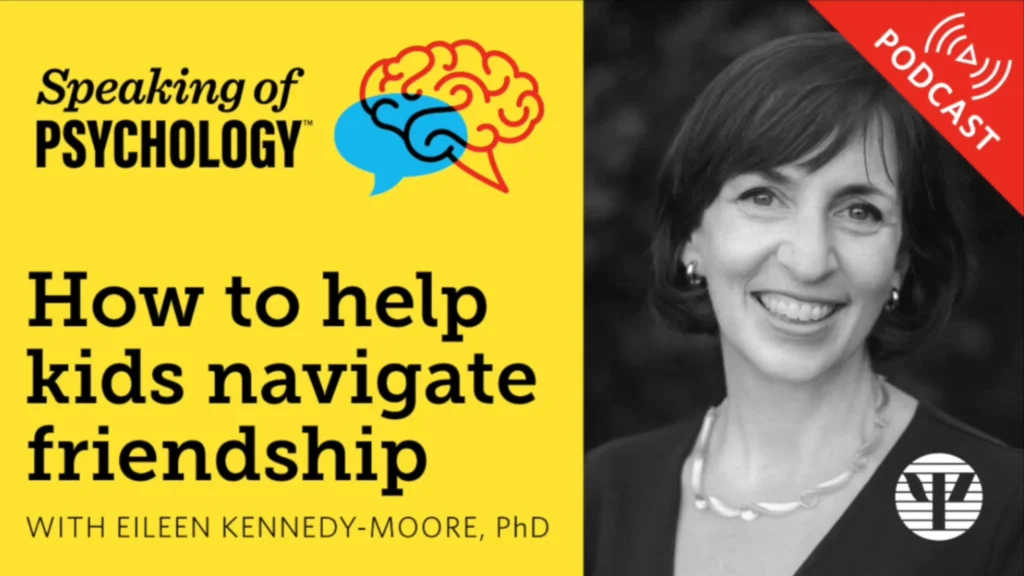
Frequently Asked Questions (FAQs)
What’s the difference between a found family and a chosen family?
While often used interchangeably, “found family” typically emphasizes the unexpected discovery of kinship-like bonds with previously unconnected individuals, while “chosen family” emphasizes the deliberate selection of non-biological relationships as primary support systems. In film narratives, characters often “find” their chosen families through circumstance before actively choosing to maintain those bonds.
How did found family narratives impact modern entertainment?
Found family narratives transformed modern entertainment by popularizing character dynamics now common in franchises from “Marvel” to “Fast and Furious”. They influenced TV shows like “Friends,” “Stranger Things,” and “The Good Place,” helped normalize diverse family structures in media, and created storytelling frameworks that remain commercially successful decades later.
What is the concept of found family?
Found family refers to a group of unrelated individuals who form deep familial bonds through shared experiences, values, or circumstances rather than biological relationships. Unlike traditional families, found families are chosen ones, often emerging under circumstances of adversity, separation, or shared goals.
What is the genre of the found family?
The found family trope is not limited to any one genre but spans across multiple genres, including adventure, drama, comedy, science fiction, and fantasy. It is a narrative device that enhances emotional depth across a variety of genres.
What does it mean if you like found family?
Liking found family narratives often reflects a desire for connection, acceptance, and belonging. It may indicate that you value relationships based on choice, trust, and shared experiences rather than obligation. Fans of this type of trope may relate to the feeling of being an outsider or seeking a community that accepts their true nature.
What is the psychology of found family?
The psychology behind the found family lies in its appeal to universal human needs, such as belonging, identity, and emotional security. According to Maslow’s hierarchy of needs, belongingness is a basic human motivation. Found family stories are relatable because they depict characters overcoming isolation or rejection to find acceptance, which mirrors real-life desires for community. These stories also draw on attachment theory, showing how chosen bonds can provide the same emotional stability as biological families, especially for people who feel isolated from traditional family structures.
What is the found family trope in movies?
The found family trope in movies refers to a group of unrelated characters—often mismatched, outcasts, or loners—who form a surrogate family through shared struggles, trust, and mutual support. This trope emphasizes emotional connections rather than biological ones, where characters find purpose and connection together.
Why is found family so popular?
The found family is popular because it presents an inclusive, relatable narrative that transcends cultural and social boundaries. It appeals to audiences who may feel marginalized or isolated, and it offers hope that meaningful relationships can be formed regardless of background.
How do movies influence our understanding of good?
Movies shape our understanding of “good” by presenting relatable characters who reflect moral dilemmas, heroic actions, and moral values. Nostalgic films like The Goonies or Back to the Future depict “good” through selflessness, courage, and loyalty within found family dynamics. These stories influence audiences by exemplifying positive qualities—empathy, teamwork, and perseverance

